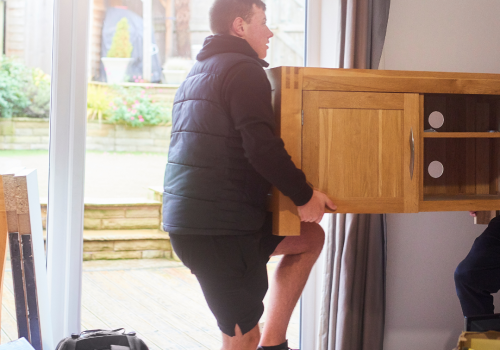Preparing for a junk removal service can significantly streamline the process and ensure a smooth, hassle-free experience. Whether you’re clearing out old furniture, sorting through accumulated clutter, or managing a large-scale estate cleanout, a little preparation goes a long way. By understanding what to expect and organizing your space beforehand, you can help the removal team work efficiently and avoid any potential hiccups. Start by identifying and sorting items that you wish to discard. Group them into categories—such as electronics, furniture, and general household waste—to facilitate easier handling and disposal. Make sure to check if any items require special disposal methods or are subject to recycling regulations. Additionally, clear a path to the items you want removed to ensure that the team can access everything without obstruction.
When optimizing processes, decluttering physical spaces, or boosting productivity, it’s vital to identify and remove unnecessary elements to achieve streamlined operations and improved efficiency. This involves carefully evaluating various aspects, such as unproductive habits that waste time, redundant processes that create inefficiencies, and outdated technology that hampers performance. It also includes addressing physical clutter that disrupts focus, ineffective communication channels that lead to misunderstandings, and non-essential commitments that contribute to burnout. Additionally, assessing and removing inefficient workflows and updating outdated knowledge and skills are crucial steps.
Unproductive habits can significantly impact your efficiency and well-being. Identifying and removing these habits is essential for personal and professional growth. Begin by tracking your daily routines and behaviors to identify patterns that are counterproductive. Common unproductive habits might include procrastination, excessive multitasking, or frequent distractions. Once identified, develop strategies to counteract these habits. For instance, setting specific time blocks for focused work and using productivity tools can help combat procrastination. Regularly reviewing and adjusting your habits ensures continuous improvement.

In any organization or personal workflow, redundant processes can waste time and resources. Streamlining these processes can lead to significant efficiency gains. Map out your current processes and identify steps that are duplicated or unnecessary. For example, if multiple approval stages are causing delays, consider consolidating them. Look for automation opportunities where technology can handle repetitive tasks. Regularly review processes to eliminate inefficiencies and adapt to changing needs.
Introduction: Outdated technology can hinder productivity and security. Regularly assessing and updating your tech stack is vital for maintaining an effective and secure work environment. Evaluate your current technology and software to determine what’s outdated or no longer effective. This includes old hardware, obsolete software, and legacy systems that may no longer support new updates. Replacing outdated technology with modern solutions can enhance performance, improve security, and streamline operations. Stay informed about technological advancements to ensure your tools and systems remain current.
Physical clutter can negatively affect your focus and productivity. Assessing and decluttering your workspace can lead to a more organized and efficient environment. Start by assessing your physical space and identifying items that are no longer needed or used. This includes old paperwork, broken equipment, and unnecessary office supplies. Implement a decluttering strategy by sorting items into categories: keep, donate, recycle, or discard. Maintaining a clutter-free workspace helps improve concentration and creates a more inviting and functional environment.
Effective communication is essential for smooth operations. Ineffective channels can lead to misunderstandings and inefficiencies. Review your current communication methods and tools to determine if they are meeting your needs. Evaluate whether communication channels are redundant or if there are gaps that need addressing. For example, if you’re using multiple messaging platforms that overlap in functionality, consolidating them might improve efficiency. Streamline communication processes to ensure clarity and minimize information loss.
Efficiently managing and organizing your possessions, whether at home or in a workspace, can significantly enhance your productivity and reduce stress. Proper categorization and sorting help you find items quickly, maintain an orderly environment, and make better decisions about what to keep or discard. Here’s a comprehensive guide with eight effective strategies for categorizing and sorting your items:
Before you can effectively categorize and sort your items, it’s essential to take an inventory and assess what you have. This step provides a clear understanding of the volume and types of items you’re dealing with. Begin by creating a detailed list of all items in a specific area, such as a room, office, or storage space. Group similar items together to get an overview of what you own. For example, in an office, list all office supplies, documents, and equipment separately. Assess each category for relevance and condition. This inventory will serve as the foundation for more detailed categorization and sorting efforts.
Defining clear categories is crucial for organizing items efficiently. Categories help you group items logically, making it easier to locate and manage them. Based on your inventory, establish broad categories that reflect the types of items you have. For example, in a home setting, categories might include clothing, kitchenware, books, and electronics. In an office setting, categories could be documents, office supplies, and equipment. Ensure that categories are mutually exclusive and cover all items. This step helps in creating an organized system where every item has a designated place.
Sorting items by how frequently they are used helps prioritize accessibility and efficiency. Items that are used daily should be easily accessible, while those used less often can be stored away. Within each category, sort items based on their usage frequency. For instance, in your kitchen, keep daily utensils and appliances within easy reach, while less frequently used items can be stored in higher cabinets or the back of shelves. In an office, position frequently used documents or tools within immediate reach, and store infrequently used items in less accessible locations. This approach ensures that you can quickly access what you need without unnecessary searching.
Items that hold significant value or importance should be treated with care and given priority in your organization system. This ensures that critical items are easily accessible and well-maintained. Evaluate the value and importance of each item within its category. For example, important documents or sentimental items should be stored in secure, easily accessible locations. In contrast, less critical items can be stored in more remote or less organized spaces. Use protective storage solutions like file folders or cases for valuable items to prevent damage and loss. This prioritization helps safeguard important assets and ensures they are easily retrievable when needed.
A labeling system is essential for maintaining organization and easily identifying items. Clear labels help you and others find what you need without confusion. Use labels to clearly identify the contents of boxes, folders, or storage containers. Choose a labeling method that suits your needs, such as printed labels, color-coded tags, or digital labels for electronic files. Ensure labels are legible and placed in a consistent location on each item or container. For example, in a filing cabinet, label folders with descriptive titles, and use consistent formatting for easy identification. This system simplifies locating and retrieving items, reducing the time spent searching.
When preparing for junk removal, it’s crucial to check for hazardous materials. These items require special handling and disposal due to their potential risks to health and the environment. Properly identifying and managing these materials ensures a safer removal process and compliance with local regulations.
Preparing for a junk removal service involves more than just a quick clean-up. By sorting and organizing your items, understanding what can and cannot be disposed of, and providing clear access for the removal team, you ensure a smooth and efficient process. This preparation not only helps the service run more smoothly but also maximizes the effectiveness of the junk removal, leaving your space clutter-free and refreshed.
If you’re ready to reclaim your space or have any questions about our services, JUNKAHAULICS is here to help. Contact us today at (910) 403-3616 or visit us at 4801 Glenwood Ave, Suite 200, Raleigh, NC 27612. Our friendly team is eager to assist with all your junk removal needs and provide you with exceptional service.


JUNKAHAULICS